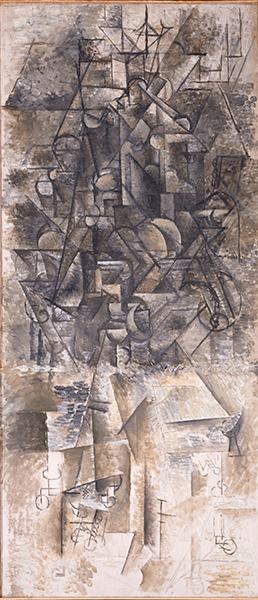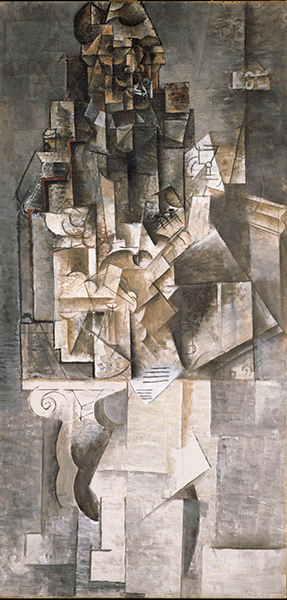The vital impulse generating a plural image such as that of cubism
Influenced by the inner visions of his friend Max, by his “inner voice”, Picasso spoke of the role of the artistic experience, thus making a clear distinction between the art object and the subject. He made a distinction between the image discussed by Bergson, identifiable with an inner visual occurrence that emerges along the outer edge of consciousness when a thought is exposed to someone else, and the image “close to intuition” which the artist “may need for himself, and which often remains unexpressed.”[1]
Max Jacob believed that the artistic gesture is a revelation that seals the bond between the outer and the inner life. That is why he urged artists to exteriorize the pearl, cast out into the world the diamond that God has placed within us.[2] For Picasso, that is where the entire secret of art lies: “the painter entrusts painting with this obligation that is in the nature of an urgent pressure to relieve him from his sensations and his visions.”[3]
In keeping with Bergson, the meaning that Max Jacob gave to this demand from the artist, to this dynamic inner thrust, was that of a vital impulse, the only one capable of generating a plural image such as that of cubism. To communicate his evidence in visual terms, Max translated the Bergsonian concept of the vital impulse by turning the schema into an image, into a dynamic diagram.
He places the artist [Picasso], represented by a fixed point, in the middle of a set of concentric ellipses with similar shapes. Then he draws a new, opposing reference, another ellipse, and traces the path of the artist's subject on this ellipse following a series of multidirectional arrows. The subject advances along the ellipse, first close to the artist, then farther away... it moves away, turns, and heads to the left... it almost disappears, but watches him and eventually heads back. The artist always remains in the center; he has to direct the viewer, but not be one himself, in order to draw that viewer in and sometimes lose him, “you can make the subject 'jump' onto an ellipse, but in reverse!”, and so forth, maybe a third time, if the subject calls for it, etc. Deleuze makes a distinction between the appeal to a recollection as a leap in which one moves into the past in general and the reminder of an image when one is already placed at a precise level in the past. One could speak of an invocation followed by an evocation, as in a séance. Max Jacob links this method to cubism. Picasso's closeness to Max Jacob imbued the paintings of analytical cubism with a spiritual character.
The visual response that Picasso contributes to the subject of Bergsonian duration is developed against a background of circularity and stratification. At the level of visual syntax, the sign can only be understood as part of the overall image, and the whole can only be understood in terms of its parts. Likewise, a dialogue is established between the superimposed planes in the painting: the surface refers to the depth, the depth refers to the surface.
When our analysis gets lost in its own meanderings, it is time to return to the point, particularly to the genesis that in nuce encompasses the work as a whole and hence its meaning. The point is a temporal awareness of the painting. As a temporal representation, it comprises two distinct, albeit often confused, levels. Following the reasoning proposed by Bergson, if we make an abstraction of a representation in spatial terms, we understand that time is only a succession of elements that are external to us, but that it certainly does depend on what we are and what we experience, from the perspective of our “deep self.” The circumstances call for another “change in perspective.”
[1] Émile Bréhier, Les études bergsoniennes, vol. II, Albin Michel, Paris 1949, pp. 198-99.
[2] Letter from Max Jacob to Marcel Béalu [1923], in Pierre Andreu, Max Jacob, Conversions célèbres, Paris, Wesmael-Chariler, p. 95.
[3] Christian Zervos, Conversation avec Picasso, Paris, Cahiers d’art, Issue 7, October 1935, pp. 173-78.






 Summary
Summary